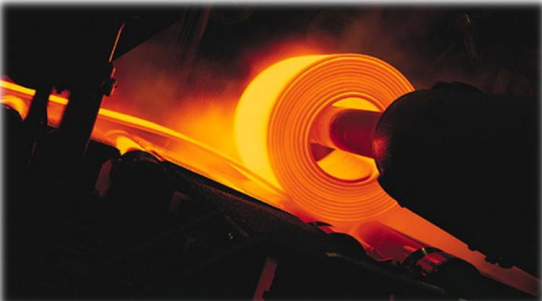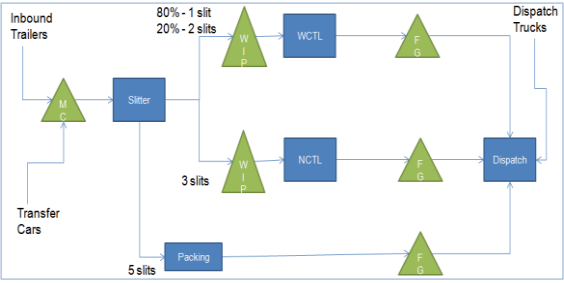
Introduction
In steel processing, where tons of material move through heavy-duty operations daily, a well-planned facility can make the difference between seamless efficiency and operational chaos. A prominent steel processor planning to establish a new plant approached Production Modeling India (PMI) to validate its design assumptions and ensure the layout and material flow strategy were free from the constraints plaguing its existing setup. The goal was clear—build a plant that supports 21 tonnes/hour capacity without bottlenecks or inefficiencies.

Client’s Challenge
Optimize storage space allocation across the plant. Improve truck dispatch utilization and reduce idle time. Ensure the new plant setup could reliably meet target throughput without manual intervention bottlenecks.

Simulation-Based Validation and Optimization for a 21 TPH Steel Processing Plant Setup - A Case Study
PMI’s Approach
PMI conducted an end-to-end simulation study to replicate the proposed setup:
Validated the model to reflect real-world conditions and expected operating logic.
Mapped material flow patterns to detect stress points in crane and forklift operations.
Ran multiple what-if scenarios to test how shifting loads between cranes and forklifts would impact overall throughput.
Reallocated storage zones using iterative simulations to reduce travel distance and handling delays.

Findings and Recommendations
The target plant capacity of 21 tonnes/hr was validated through simulation. Existing crane deployment was inadequate for peak operations. Strategic load transfer to forklifts eased crane congestion. The optimum truck inter-arrival time was defined to minimize queuing and enhance dispatch flow. A revised layout with optimized storage space was proposed.

Conclusion
PMI’s simulation-driven validation helped the client avoid costly oversights before breaking ground. With optimized resources, flow paths, and dispatch logic, the new plant design was ready to deliver on its promise of efficiency from day one.
